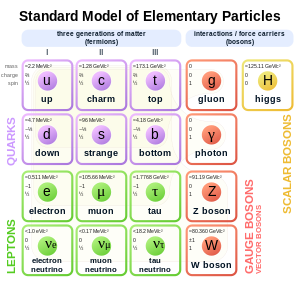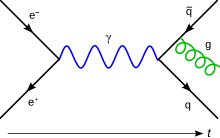History
The idea that all matter is composed of elementary particles dates to at least the 6th century BC. The philosophical doctrine of atomism and the nature of elementary particles were studied by ancient Greek philosophers such as Leucippus, Democritus and Epicurus; ancient Indian philosophers such as Kanada, Dignāga and Dharmakirti; medieval scientists such as Alhazen, Avicenna and Algazel; and early modern European physicists such as Pierre Gassendi, Robert Boyle and Isaac Newton. The particle theory of light was also proposed by Alhazen, Avicenna, Gassendi and Newton. These early ideas were founded in abstract, philosophical reasoning rather than experimentation and empirical observation.
In the 19th century, John Dalton, through his work on stoichiometry, concluded that each element of nature was composed of a single, unique type of particle. Dalton and his contemporaries believed these were the fundamental particles of nature and thus named them atoms, after the Greek word atomos, meaning "indivisible". However, near the end of the century, physicists discovered that atoms were not, in fact, the fundamental particles of nature, but conglomerates of even smaller particles. The early 20th century explorations of nuclear physics and quantum physics culminated in proofs of nuclear fission in 1939 by Lise Meitner (based on experiments by Otto Hahn), and nuclear fusion by Hans Bethe in the same year. These discoveries gave rise to an active industry of generating one atom from another, even rendering possible (although not profitable) the transmutation of lead into gold (alchemy). They also led to the development of nuclear weapons. Throughout the 1950s and 1960s, a bewildering variety of particles were found in scattering experiments. This was referred to as the "particle zoo". This term was deprecated after the formulation of the Standard Model during the 1970s in which the large number of particles was explained as combinations of a (relatively) small number of fundamental particles.


